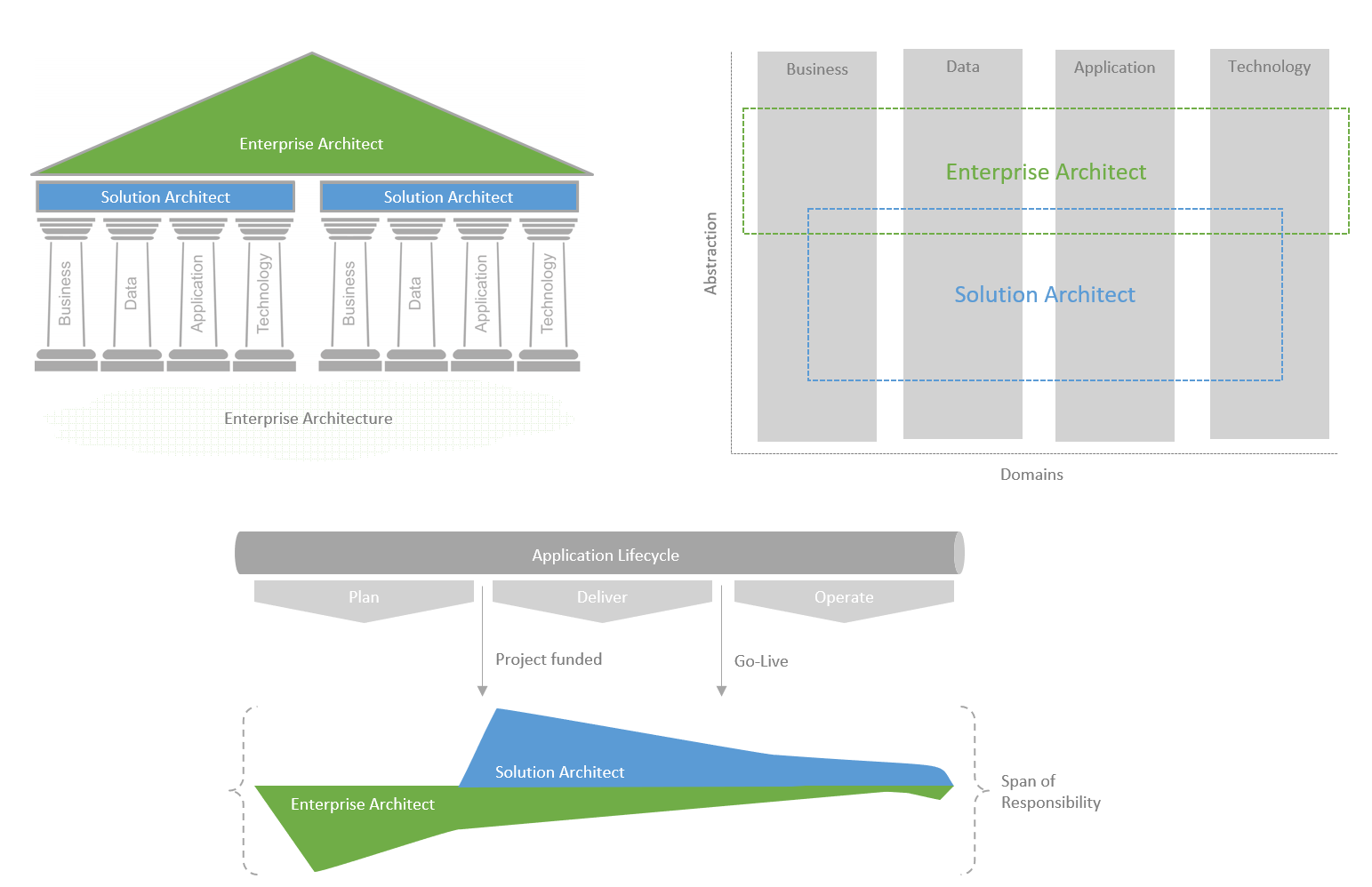Enterprise Architecture
Enterprise architecture (EA) is the process by which organizations standardize and organize IT infrastructure to align with business goals.
What is Enterprise Architecture?
Enterprise Architecture (EA) is an organizational model; an abstract representation of an Enterprise that aligns strategy, operations and technology to create a roadmap for success. There are many definitions of the word enterprise: in EA, an enterprise is a complex organization that is attempting to undergo change. – https://eabok.org
- Snippet from Wikipedia: Enterprise architecture
Enterprise architecture (EA) is a business function concerned with the structures and behaviours of a business, especially business roles and processes that create and use business data. The international definition according to the Federation of Enterprise Architecture Professional Organizations is "a well-defined practice for conducting enterprise analysis, design, planning, and implementation, using a comprehensive approach at all times, for the successful development and execution of strategy. Enterprise architecture applies architecture principles and practices to guide organizations through the business, information, process, and technology changes necessary to execute their strategies. These practices utilize the various aspects of an enterprise to identify, motivate, and achieve these changes."
The United States Federal Government is an example of an organization that practices EA, in this case with its Capital Planning and Investment Control processes. Companies such as Independence Blue Cross, Intel, Volkswagen AG, and InterContinental Hotels Group also use EA to improve their business architectures as well as to improve business performance and productivity. Additionally, the Federal Enterprise Architecture's reference guide aids federal agencies in the development of their architectures.
Source: YouTube
Benefits of Enterprise Architecture
Enterprise Architecture Frameworks
- TOGAF Overview - The Open Group Architectural Framework (TOGAF)
- UPDM
- ArchiMate
TOGAF
TOGAF (The Open Group Architecture Framework) is a comprehensive framework for enterprise architecture that provides an approach for designing, planning, implementing, and governing an enterprise information architecture. It is widely used by organizations to improve business efficiency and achieve strategic goals. TOGAF is based on four key domains: Business, Application, Data, and Technology, and it includes a detailed methodology known as the Architecture Development Method (ADM).
Agile Enterprise Frameworks:
See also
- COBIT
- ITIL
Enterprise Architecture Domains
Perspectives:
- Business perspective - Defines the processes and standards by which the business operates on a day-to-day basis
- Application perspective - Defines the interactions among the processes and standards used by the organization
- Information/data perspective - Defines and classifies the raw data (such as document files, databases, images, presentations, and spreadsheets) that the organization requires in order to efficiently operate
- Technology perspective - Defines the hardware, operating systems, programming, and networking solutions used by the organization
EA Pillars:
Enterprise Architecture Roles
- Enterprise Architecture (..as a function)
Other roles:
- Business Architect
- System Architect
- Digital Architect
- CIO
- …
… as a function:
- Role vs Function - EA is a function???!?

.. vs ..
Architecture Articles


